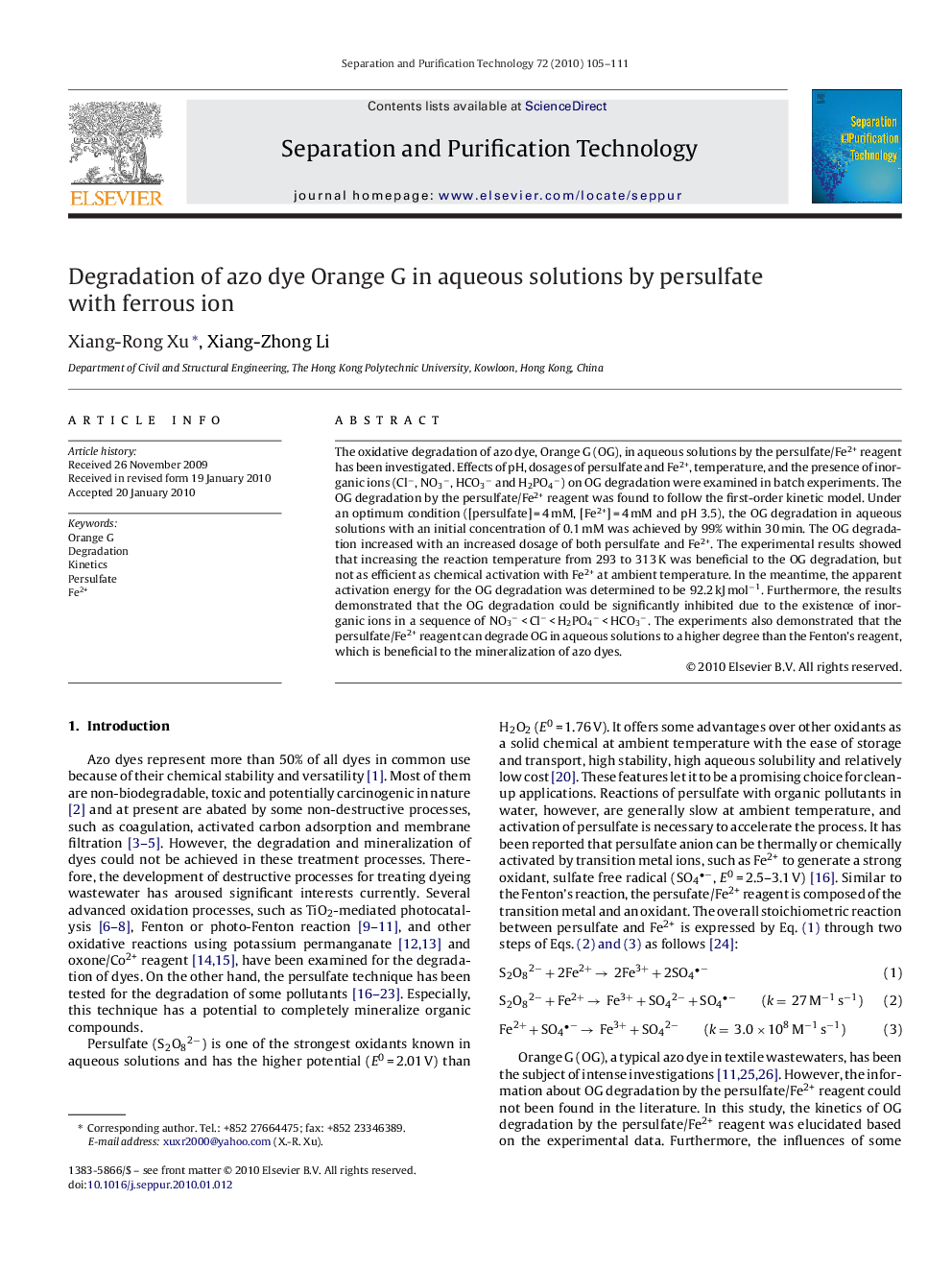| Article ID | Journal | Published Year | Pages | File Type |
|---|---|---|---|---|
| 643013 | Separation and Purification Technology | 2010 | 7 Pages |
The oxidative degradation of azo dye, Orange G (OG), in aqueous solutions by the persulfate/Fe2+ reagent has been investigated. Effects of pH, dosages of persulfate and Fe2+, temperature, and the presence of inorganic ions (Cl−, NO3−, HCO3− and H2PO4−) on OG degradation were examined in batch experiments. The OG degradation by the persulfate/Fe2+ reagent was found to follow the first-order kinetic model. Under an optimum condition ([persulfate] = 4 mM, [Fe2+] = 4 mM and pH 3.5), the OG degradation in aqueous solutions with an initial concentration of 0.1 mM was achieved by 99% within 30 min. The OG degradation increased with an increased dosage of both persulfate and Fe2+. The experimental results showed that increasing the reaction temperature from 293 to 313 K was beneficial to the OG degradation, but not as efficient as chemical activation with Fe2+ at ambient temperature. In the meantime, the apparent activation energy for the OG degradation was determined to be 92.2 kJ mol−1. Furthermore, the results demonstrated that the OG degradation could be significantly inhibited due to the existence of inorganic ions in a sequence of NO3− < Cl− < H2PO4− < HCO3−. The experiments also demonstrated that the persulfate/Fe2+ reagent can degrade OG in aqueous solutions to a higher degree than the Fenton's reagent, which is beneficial to the mineralization of azo dyes.
